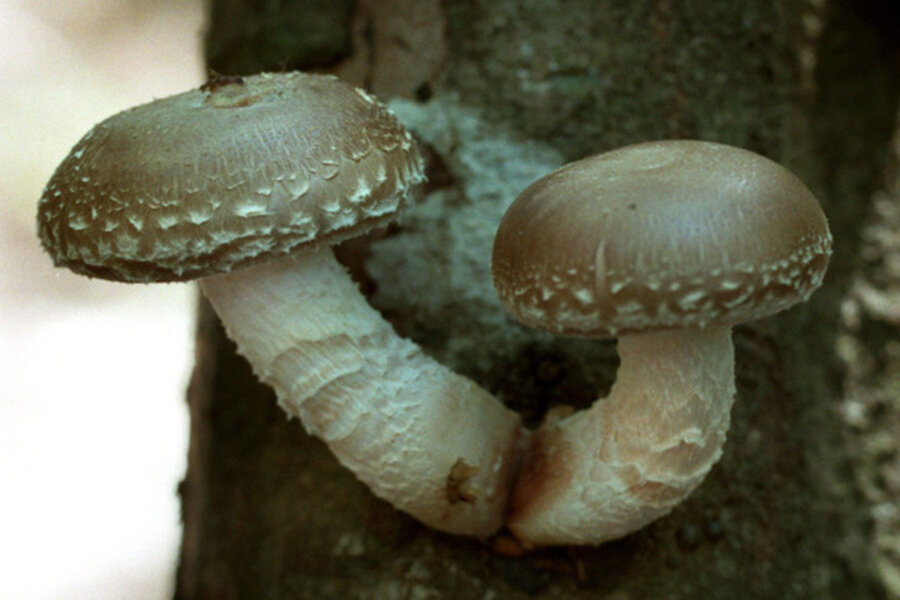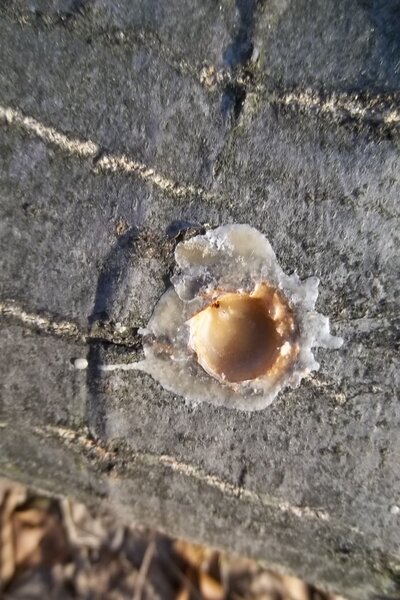Grow your own shiitake mushrooms
Loading...
While I do grow some of my own edibles, I limit them to plants that can take care of themselves.
So news about a local workshop on growing shiitakes rekindled an old interest that also spoke to my laissez-faire gardening gene. With these delectable Japanese mushrooms priced at $18 per pound at the local supermarket, the announcement also activated my inner tightwad.
Shiitakes' chewy texture and hearty flavor make them a gourmet treat that can be used in any dish that calls for mushrooms. They're also low in calories, low in fat, and have other nutritional benefits.
Start with logs
Shiitakes ("tree" + "mushroom"), Letinula edodes, are wood decomposers, meaning that the mushroom spawn gets its nutrition by digesting wood.
The spawn is "planted" by inoculating it into green, dense hardwood logs -- such as oak, hickory, chestnut, beech, or maple -- where it extends a mat of mycelium "threads" throughout the log. When the mycelia reach the ends of the log, the fungus is ready to produce fruit – the mushrooms.
Spawn is available as plugs that are hammered into holes drilled into the logs, or as a sawdust block, which is crumbled and packed into the holes by hand. The inoculated holes are covered with hot wax, to seal in moisture and seal out other fungi spores and bacteria.
You can cut your own logs, get a specialized drill bit, purchase the spawn, and inoculate the logs yourself, or do it my way and buy ready-to-grow logs. If you choose the latter, remember that the logs are green and heavy; so try to find a local supplier. A three- or four-foot log yields about a pound of mushrooms per year.
While most shiitakes are grown commercially in sawdust, wood chips, or other substrates, experts say the shelf life, texture, and nutritional value of those grown on natural logs is superior.
It's your choice - low maintenance or no maintenance
Once you have the inoculated logs, you can sit back and let nature take its course, just making sure the logs get enough water. Or, if you're more impatient, you can force them to fruit on a predetermined schedule.
Shiitakes will naturally fruit after periods of heavy spring and fall rain, after thunderstorms, or during periods of high humidity. Left to grow on their own, the logs may take up to a year to produce; when "forced," they will yield mushrooms in about six months.
Periodically soaking the logs for 24 to 72 hours will force mushrooms in 10 to 12 weeks.
The logs should then be rested and kept out of the rain for an additional 10 to 12 weeks before they are soaked again. In this way, you can produce a flush of shiitakes about every three months, but the logs won't last as long as those left to fruit naturally.
The largest mushrooms grow the first year, but the greatest yield takes place in the third year. You can expect logs to produce for four to six years, depending upon how often they are forced to fruit. Each log has only a certain amount of sapwood tissue that the fungus can draw on for food and, once it's used up, the log will no longer bear mushrooms.
To grow properly, the shiitake logs need to be raised slightly off the ground on a gravel or drywall base to deter slugs and allow air to circulate. Keep them in a moist, shady spot, and soak them if they receive less than an inch of rainfall per week.
Periodically check the logs' moisture content by hefting to gauge their weight. Avoid leaving them in strong winter sun or heavy winds, which will dry them out.
Slugs are the main competitors for the spawn, but deer, chipmunks, squirrels, and other small mammals will try to beat you to the mushrooms, so locate the logs where you can see or pass by, and harvest them daily. The mushrooms can be refrigerated for up to two weeks.
Detailed growing instructions, supplier lists, recipes, and numerous links to other resources can be found at The Mushroom Growers Newsletter and the website of mushroom guru Paul Stamets.
Folks in and around New Jersey can contact Ian Blanchard for more information about his workshop schedule..
-----
Lois de Vries, a popular speaker at regional flower shows and garden clubs, writes from her home in rural northwestern New Jersey. To read her other posts at Diggin' It, click here. She's a field editor for Better Homes and Gardens and Country Gardens magazines and has been a contributing editor for other national publications. She was awarded the Jefferson Presidential Award for public service in environmental work. Click here and here to read about her garden design and environmental ideas and her holistic approach to gardening.You can also follow her on Twitter and Facebook






